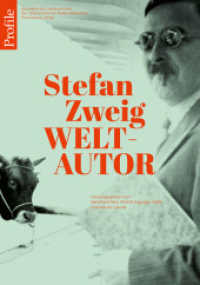Description
(Short description)
(Text)
(Text)
Zentrales Ziel der vorliegenden Studie ist die Herausarbeitung von Theatralisierungsstrategien epischer Stoffe im spätmittelalterlichen und frühneuzeitlichen deutschsprachigen Spiel. Exemplarisch werden hierzu die Artustradition (Analyse von Fastnachtspielen mit Artusthematik), die Schwankdichtung (anhand der Neidhartspiele) und die Heldenepik analysiert. In der letzten Kategorie werden der "Wunderer", das "Tiroler Reckenspiel", das "Spiel vom Hürnen Sewfriedt" des Hans Sachs und Jakob Ayrers Wolfdietrichtrilogie behandelt. Durch den kontinuierlichen Vergleich mit geistlichen Spielen ergeben sich Performativitätsprofile beider Gattungen, die gemeinsame Techniken der Inszenierung aufdecken. Dies zeigt die Analyse der dramatischen Umsetzung des Artusstoffes in aller Deutlichkeit. Hier dient beispielsweise ein Blick auf Klageperformanzen in geistlichen Spielen zur Erhellung der Klageperformanz einzelner Figuren im weltlichen Spiel. Es zeigt sich, dass die Fastnachtspiele zwar die tra
(Short description)
This study concentrates on strategies of the theatralization of epic motifs in the late medieval and early modern play in combination with the question of the advantages which lie in a dramatic realization compared to an epic or lyric text. The study comprises the analysis of shrovetide plays with Arthurian motifs, the Neidhart plays, and the heroic epic (e.g. the play of the 'Wunderer', the 'Tirolean Reckenspiel', the play of the 'Hürnen Sewfriedt' by Hans Sachs, and Jakob Ayrer's 'Wolfdietrich' trilogy. The permanent comparison with religious plays allows us to obtain profiles of the performativity of both profane and religious plays. These profiles reveal ways of performing central aspects or scenes in both genres. Furthermore, an analysis of sacred plays at the same time and their impact on the spectators is also given, because the theatralization of biblical-epic motifs is supposed to be a subject of performative rules in analogy to those of the profane play. On the whole, the medieval plays - beyond the mere text - are seen as an outstanding event of cultural life in medieval cities.







